Building for the Future in More Ways Than One
Most people pursue hobbies such as golf, music or art. College of Medicine – Tucson professor Todd Vanderah, PhD, constructs custom homes.
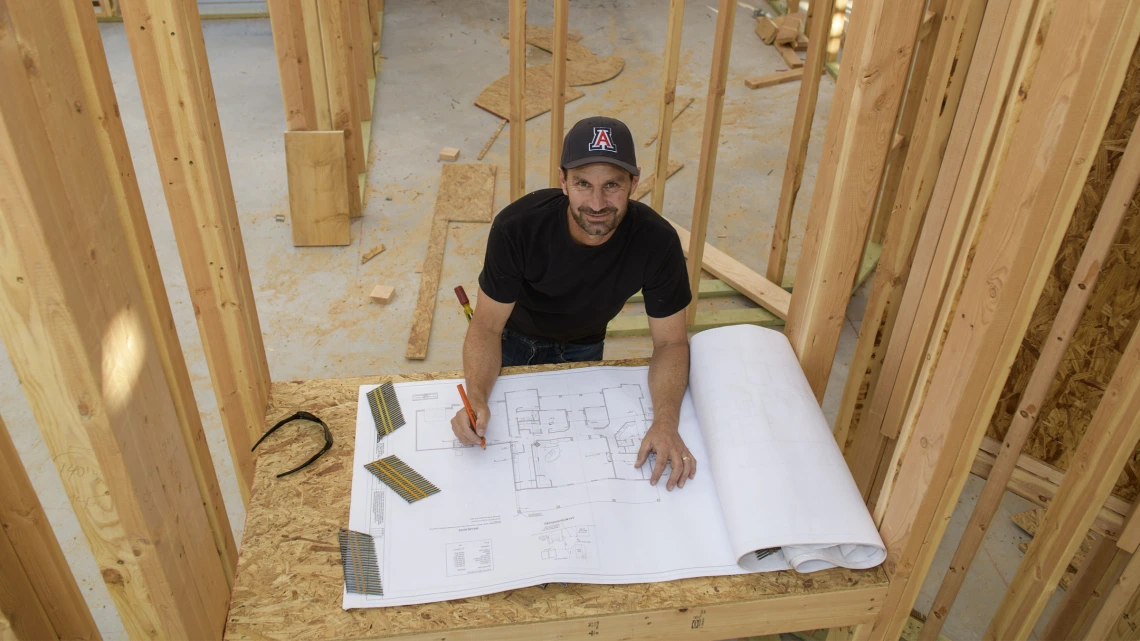
Whether it’s building a house or building a new program at the University of Arizona Health Sciences, Todd Vanderah, PhD, creates a strong framework.
Todd Vanderah, PhD, likes to build things, whether it’s the University of Arizona Health Sciences Comprehensive Pain and Addiction Center, a 3,600-square-foot house in Oro Valley, Arizona, or a new bachelor’s degree in medicine.
His drive to shape his environment transcends his roles as professor, educator, researcher, administrator and general contractor. No matter the position, being a builder isn’t something he does – it’s who he is.
The early years
After work and on weekends, you’re likely to find Dr. Vanderah at the construction site of his latest project. If you didn’t know about his day job as chair of the Department of Pharmacology in the UArizona College of Medicine – Tucson, you’d be hard pressed to imagine him at the head of a classroom or leading a research lab, as he wields hammer and saw with an ease born of experience.
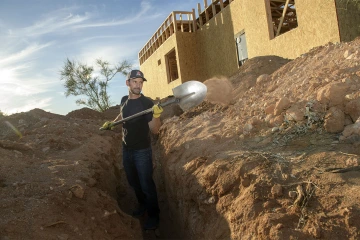
Doing the behind-the-scenes work like digging trenches for drainage or electrical lines means a house has a solid foundation. So too did Todd Vanderah set the footing to get the Comprehensive Pain and Addiction Center ready in 2019.
Dr. Vanderah took the community college route to the University of Arizona, discovering an affinity for science along the way. With a bachelor’s degree in molecular and cellular biology in hand, he faced a crossroads – medical school or graduate school.
“I was doing volunteer work at Kino Hospital, and every day I would come home disappointed and sad. I realized that I didn't like it since I couldn't fix all the patients,” said Dr. Vanderah, who was on the waiting list for medical school when he decided to withdraw and wait one more year.
He never applied again.
“I was amazed at how clinicians day-in and day-out faced illness and adversity in their patients but I just couldn’t do it,” said Dr. Vanderah, who went on to get his doctorate in pharmacology and toxicology at the College of Pharmacy. “I'm a person who fixes things. I'm a framer.”
Making plans, getting permits
Before any construction project can begin, Dr. Vanderah knows there is land to be bought, blueprints to be drafted and permits to be obtained. The behind-the-scenes work isn’t glamorous, but it is necessary.
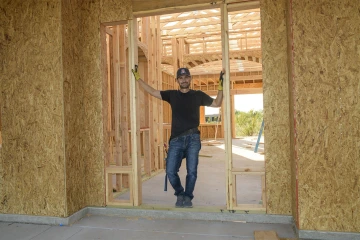
With the skeleton of the house in place, Dr. Vanderah can begin fleshing out the home. Similarly, aligning grants and research projects for CPAC allowed the center to start its mission.
Much like a survey shows how a house fits into the existing landscape, the proposal explained how the new degree aligned with the university’s mission and strategic plan. It went on to describe the program in intricate detail, from faculty resources to curriculum development and program goals.
Builders construct houses for the eventual homeowner, and Dr. Vanderah and the committee crafted the bachelor’s in medicine to serve University of Arizona Health Sciences students.
“When I was a student at the U of A myself, I was kind of left on my own to say, ‘Maybe I want to do medicine; maybe I don't. What else is out there?’” said Dr. Vanderah, who serves as co-director of the College of Medicine – Tucson’s Medical Scientist Training MD-PhD Program and is a member of the university’s BIO5 Institute. “This degree program will give students a better idea of what the practice of medicine really is and let them know there are many other options besides medicine that they might be very happy pursuing.”
The proposal was approved by the Arizona Board of Regents in early 2021, and the program will accept its first students in spring 2022.
Laying the foundation, raising the frame
Dr. Vanderah recognizes the importance of a solid foundation, which is why each new home he builds starts by moving dirt. Trenches are dug and the ground is leveled in advance of pouring the concrete foundation that will support the house for decades to come. He does it himself – first with a tractor, then a shovel – because he likes the work.
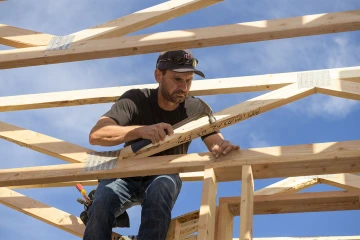
Dr. Vanderah has lofty ambitions for CPAC. He also makes sure the roof is solid in the house he is building.
“I’m always surprised that we didn’t start this center 20 years ago,” Dr. Vanderah said, citing conversations with colleagues including Frank Porreca, PhD, Mohab Ibrahim, MD, PhD, Rajesh Khanna, PhD, Tally Largent-Milnes, PhD and Amol Patwardhan, MD, PhD, who also believed in the need for a center focused on pain. “The University of Arizona Health Sciences is one of the strongholds for chronic pain and addiction research. We are in a very unique area since we are a border state, we have an aging population, and we have people who have chronic pain. Unfortunately, the tool that has always been given for chronic pain are opiates.”
He drafted a proposal for a UArizona Health Sciences pain center that would incorporate research, clinical care, education, legislation and outreach to solve the problems of chronic pain and addiction. The plans were well received by university leaders, who approved and funded the initiative that would become known as the Comprehensive Pain and Addiction Center, or CPAC.
Impressed by the proposal, they asked Dr. Vanderah to oversee the development of the center as its interim director. He agreed.
Installing the intermediaries, forging ahead
With the skeleton of a house in place, Dr. Vanderah turns his attention to the intermediaries – pipes for plumbing and gas lines, cables for electricity, and ducts for heat and air conditioning. The installations are thoughtfully planned and carefully executed to ensure the resulting home will be both functional and comfortable.
“I'm a person who fixes things. I'm a framer.”Todd Vanderah, PhD
At CPAC, those intermediaries are the grants, contracts, relationships and research projects that will allow the center to execute its mission. While pandemic-related budget cuts slowed some of the center’s momentum, CPAC members were still able to secure grants to develop paraprofessional training programs to help those with substance use disorder and advance pain research in two areas of strength – alternatives to opioids and non-psychotropic cannabinoids.
“Pain and addiction are two things that you'll find people are passionate about, and if you find people who are passionate, you're going to get people who really want to do something,” said Dr. Vanderah, whose own research includes exploring the mechanisms and pharmacology of acute and chronic models of pain, opioids, cannabinoids and sensory neural systems. “I tried to get everybody involved, but it’s hard when you don’t have anything to offer. A lot of it is about your personality – whether you can keep people fighting for what they think is right.
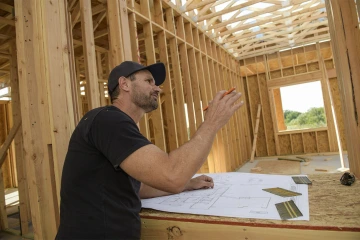
Dr. Vanderah checks the plans for the house he is building.
“I have some great people who have stuck with growing the center. The ones who really have their hearts in it are right here, working side by side on some exciting new projects,” he added of the momentum that is growing within the CPAC framework he built.
Fiscal year 2022 is, quite literally, a new year for the Comprehensive Pain and Addiction Center, which has already received funding from multiple federal and state sources that will allow its members to build upon the foundation and framework already in place.
“It's been great,” Dr. Vanderah said of seeing the CPAC grow and expand. “I hope to continue to make it a success.”
It’s a safe bet he will, because while Dr. Vanderah is passionate as a scientist and educator, in his heart, he will always be a builder.

